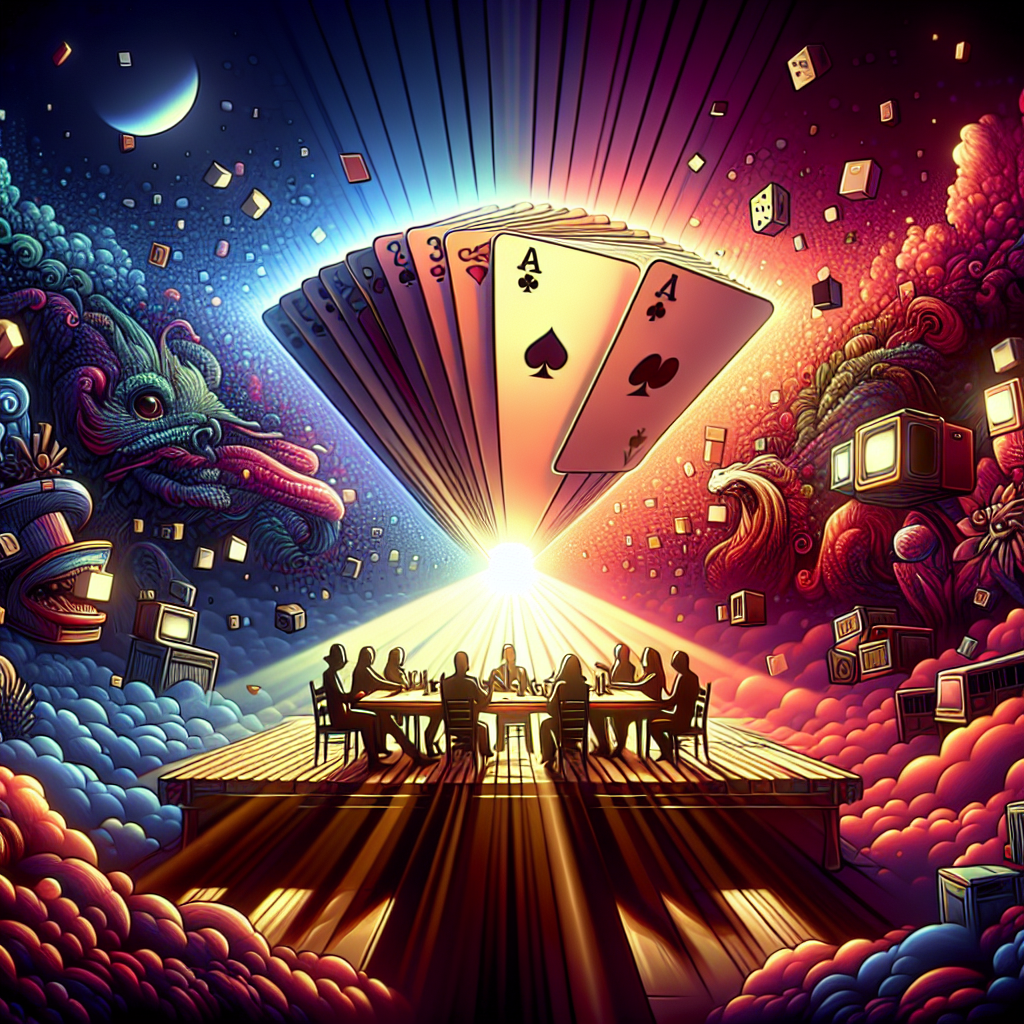Pokemon TCG enjoys resurgence

The Evolution Of Pokemon TCG: How Nostalgia Fuels Its Resurgence
The Pokémon Trading Card Game (TCG) has experienced a remarkable resurgence in recent years, captivating both new enthusiasts and seasoned collectors alike. This revival can be attributed to a confluence of factors, with nostalgia playing a pivotal role in rekindling interest among those who grew up during the franchise’s initial boom in the late 1990s. As these individuals, now adults, seek to reconnect with cherished childhood memories, the Pokémon TCG has emerged as a powerful conduit for nostalgia, offering a tangible link to the past while simultaneously evolving to captivate a new generation of fans.
Initially launched in 1996, the Pokémon TCG quickly became a cultural phenomenon, with its popularity fueled by the success of the Pokémon video games and animated series. However, like many trends, its prominence waned over time as new forms of entertainment emerged. Yet, the cyclical nature of nostalgia has breathed new life into the game, as those who once traded cards on playgrounds now find themselves drawn back to the hobby. This resurgence is not merely a fleeting trend but rather a testament to the enduring appeal of Pokémon as a franchise and the emotional connection it fosters.
One of the key factors driving this renewed interest is the sense of community that the Pokémon TCG fosters. In an increasingly digital world, the tactile experience of handling physical cards and engaging in face-to-face gameplay offers a refreshing contrast. Collectors and players alike gather at local game stores, conventions, and online forums to share their passion, exchange cards, and participate in tournaments. This sense of camaraderie and shared enthusiasm has been instrumental in sustaining the game’s popularity, as it provides a platform for individuals to connect over a common interest.
Moreover, the Pokémon Company has adeptly capitalized on this resurgence by introducing new expansions and special sets that appeal to both nostalgic collectors and competitive players. By striking a balance between honoring the game’s roots and incorporating innovative mechanics, the company has ensured that the Pokémon TCG remains relevant and engaging. For instance, the release of anniversary sets featuring reprints of classic cards has been met with enthusiasm, as they evoke fond memories while also offering new strategic possibilities.
In addition to nostalgia and community, the Pokémon TCG’s resurgence can also be attributed to the broader trend of collectible card games gaining mainstream attention. The rise of online platforms and streaming services has allowed players to showcase their skills and collections to a global audience, further fueling interest in the hobby. High-profile influencers and content creators have played a significant role in popularizing the game, as their enthusiasm and expertise inspire others to explore the world of Pokémon TCG.
Furthermore, the investment potential of Pokémon cards has attracted a new demographic of collectors. Rare and sought-after cards have fetched staggering prices at auctions, drawing attention from investors seeking alternative assets. This financial aspect, while not the primary driver for most enthusiasts, has nonetheless contributed to the game’s visibility and allure.
In conclusion, the resurgence of the Pokémon Trading Card Game is a multifaceted phenomenon driven by nostalgia, community, innovation, and investment potential. As the game continues to evolve, it remains a beloved pastime that bridges generations, offering both a nostalgic journey for those revisiting their youth and an exciting adventure for newcomers. The enduring appeal of Pokémon, coupled with the strategic depth and social connections fostered by the TCG, ensures that it will continue to thrive in the years to come.
Investing In Pokemon TCG: Why Collectors Are Returning To The Game

The Pokémon Trading Card Game (TCG) has experienced a remarkable resurgence in recent years, captivating both seasoned collectors and new enthusiasts alike. This renewed interest can be attributed to a confluence of factors that have reignited the passion for collecting and investing in these iconic cards. As the market for Pokémon TCG continues to expand, collectors are increasingly viewing these cards not just as nostalgic memorabilia, but as viable investment opportunities.
One of the primary reasons for the resurgence of interest in Pokémon TCG is the nostalgia factor. Many of today’s collectors grew up during the late 1990s and early 2000s, a period when Pokémon first captured the hearts of millions worldwide. As these individuals have reached adulthood, they find themselves drawn back to the cards that once defined their childhood. This sense of nostalgia is further amplified by the social media-driven culture of sharing and showcasing collections, which has created a vibrant community of enthusiasts eager to relive and share their experiences.
In addition to nostalgia, the financial potential of Pokémon TCG has become increasingly apparent. The market for rare and valuable cards has seen significant growth, with some cards fetching astronomical prices at auctions. For instance, first-edition holographic Charizard cards have sold for hundreds of thousands of dollars, highlighting the lucrative nature of this market. This has attracted not only collectors but also investors who recognize the potential for substantial returns. The scarcity and condition of these cards play a crucial role in determining their value, making them akin to other forms of alternative investments such as art or vintage automobiles.
Moreover, the Pokémon Company has played a pivotal role in sustaining and enhancing interest in the TCG. Through strategic releases of new card sets and special editions, they have managed to keep the game fresh and exciting. These releases often coincide with major anniversaries or events, creating a sense of anticipation and urgency among collectors. Additionally, the company has embraced digital platforms, allowing players to engage with the game online, thus broadening its appeal to a tech-savvy audience.
The influence of prominent figures and celebrities has also contributed to the resurgence of Pokémon TCG. High-profile individuals, including popular YouTubers and social media influencers, have showcased their collections and investments, bringing mainstream attention to the hobby. Their endorsements have not only validated the interest in Pokémon TCG but have also inspired a new generation of collectors to explore the game.
Furthermore, the global pandemic has inadvertently fueled the interest in Pokémon TCG. With more people spending time at home, hobbies such as card collecting have provided a welcome distraction and a sense of community. The increased time spent online has facilitated the growth of virtual marketplaces, where collectors can buy, sell, and trade cards with ease. This accessibility has lowered the barrier to entry for new collectors, further expanding the market.
In conclusion, the resurgence of Pokémon TCG can be attributed to a combination of nostalgia, financial potential, strategic marketing, celebrity influence, and the impact of the pandemic. As collectors and investors continue to flock to this vibrant market, the Pokémon Trading Card Game is poised to remain a significant cultural and financial phenomenon for years to come.
Community And Competition: The Role Of Online Platforms In Pokemon TCG’s Revival
The resurgence of the Pokémon Trading Card Game (TCG) has been a fascinating phenomenon, capturing the attention of both long-time enthusiasts and newcomers alike. This revival can be attributed to several factors, but one of the most significant is the role of online platforms in fostering a vibrant community and competitive scene. As the world becomes increasingly digital, these platforms have provided a space for players to connect, compete, and share their passion for Pokémon TCG, thus breathing new life into the game.
To begin with, online platforms have made Pokémon TCG more accessible than ever before. In the past, players were often limited by geographical constraints, relying on local game stores or community events to find opponents and participate in tournaments. However, with the advent of digital platforms, players can now engage with others from around the globe, breaking down barriers and expanding the reach of the game. This increased accessibility has not only attracted new players but also encouraged former players to return, drawn by the ease of finding matches and the opportunity to engage with a diverse community.
Moreover, online platforms have facilitated the growth of a robust competitive scene. Through digital tournaments and leagues, players can test their skills against a wide range of opponents, gaining valuable experience and honing their strategies. These competitions often feature live streaming and commentary, allowing spectators to follow the action and learn from top players. This exposure has helped to elevate the profile of Pokémon TCG, showcasing the depth and complexity of the game to a broader audience. As a result, more players are inspired to improve their skills and participate in competitive play, further fueling the game’s resurgence.
In addition to fostering competition, online platforms have also played a crucial role in building a sense of community among Pokémon TCG players. Social media groups, forums, and dedicated websites provide spaces for players to share deck ideas, discuss strategies, and celebrate their love for the game. These interactions create a sense of camaraderie and belonging, as players connect over their shared passion and support one another in their endeavors. This sense of community is particularly important in a digital age, where face-to-face interactions may be limited, and it has contributed significantly to the game’s renewed popularity.
Furthermore, the integration of online platforms with physical gameplay has created a seamless experience for players. Many platforms offer digital versions of physical cards, allowing players to build and test decks online before investing in physical copies. This integration not only enhances the strategic aspect of the game but also encourages players to engage with both digital and physical formats, bridging the gap between the two and enriching the overall experience.
In conclusion, the resurgence of Pokémon TCG can be largely attributed to the pivotal role of online platforms in fostering community and competition. By providing accessibility, facilitating competitive play, and nurturing a sense of community, these platforms have revitalized interest in the game and attracted a new generation of players. As technology continues to evolve, it is likely that online platforms will remain integral to the Pokémon TCG experience, ensuring that the game continues to thrive in the years to come.

